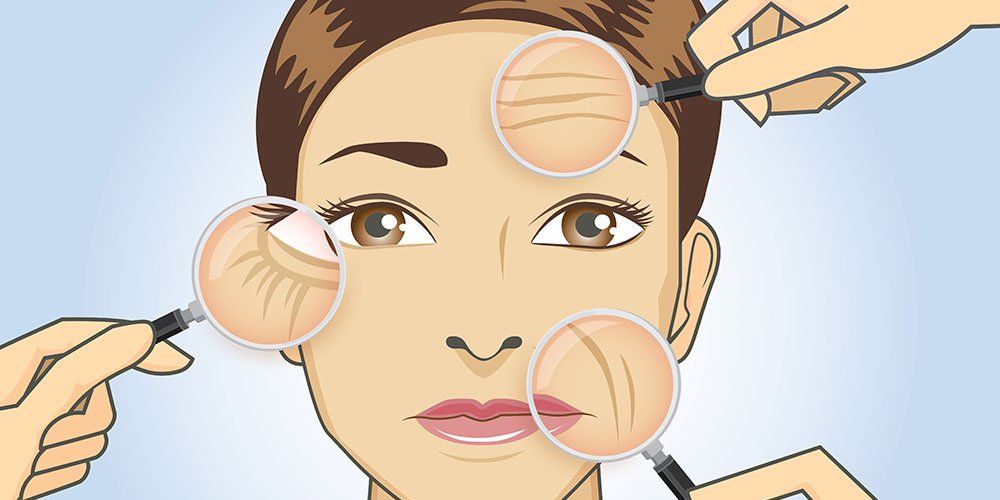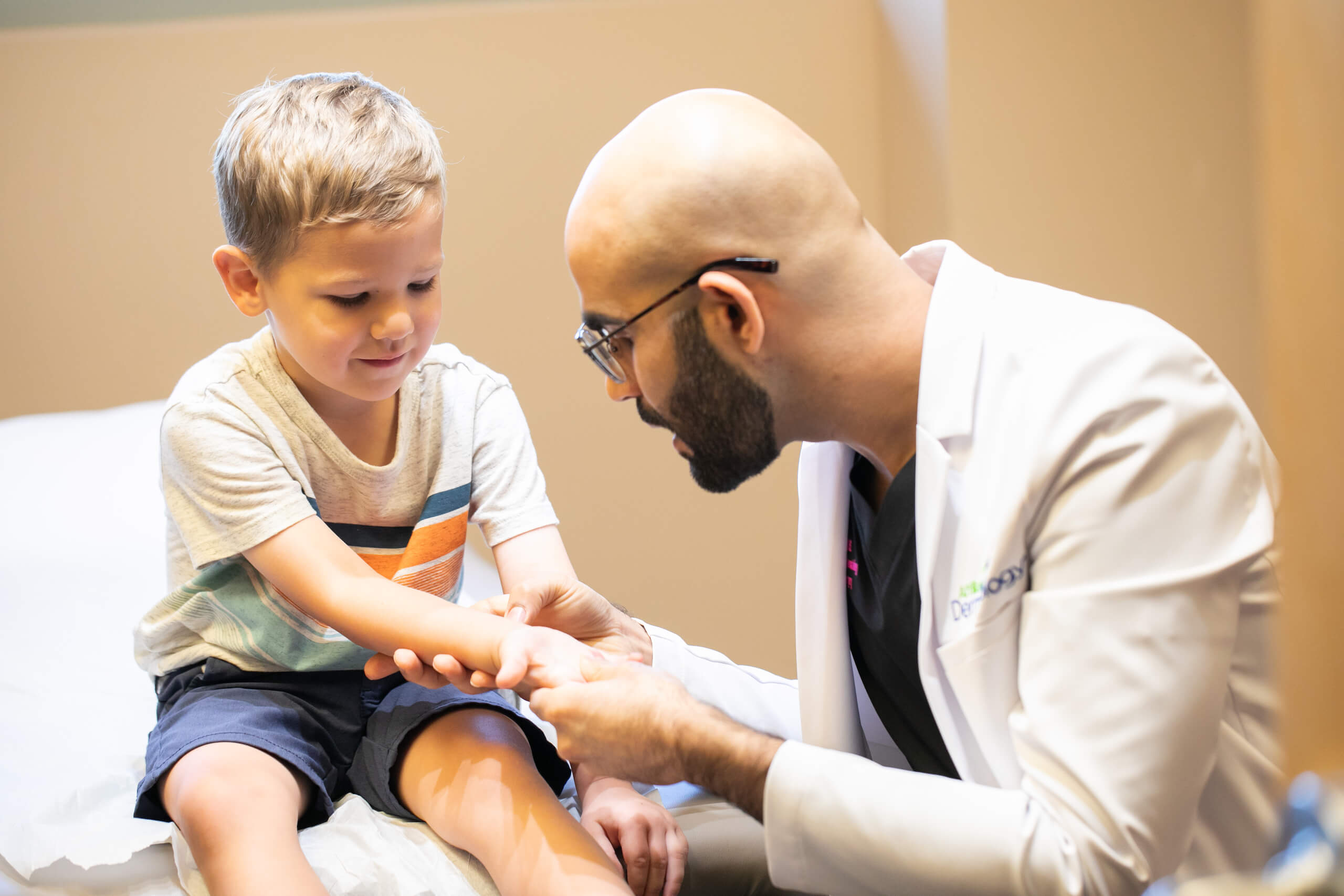The Duty of a Skin Doctor in Diagnosing and Dealing With Various Skin Conditions
The duty of a dermatologist expands far beyond standard skin care; it includes the detailed procedures of identifying and treating a broad variety of skin problems. The intricacy of skin problems often calls for a diverse approach that includes not just clinical interventions but likewise client education and preventative methods.
Relevance of Skin-related Proficiency
The know-how of skin specialists is important in the diagnosis and management of skin disorders, as they have specialized understanding that expands past general medical training. This sophisticated understanding is important for precisely recognizing a vast array of skin conditions, which commonly present with overlapping signs that can perplex non-specialist professionals. Skin specialists are educated to distinguish between different skin problems, making certain appropriate treatment plans are carried out promptly.
Furthermore, the area of dermatology encompasses a distinct combination of professional abilities and advanced innovation. Dermatologists make use of advanced analysis tools, such as dermatoscopes and skin biopsies, to analyze skin sores and identify their nature. This technical efficiency enables early discovery of possibly severe conditions, including skin cancers, which can substantially enhance patient outcomes.

Usual Skin Problems Identified
Various skin conditions can provide with varying levels of extent and complexity, making skin-related proficiency vital for precise medical diagnosis and management. Among the most common conditions are acne vulgaris, dermatitis, dermatitis, and psoriasis.
Acne vulgaris, defined by the existence of pustules, papules, and comedones, mostly impacts adolescents yet can continue into the adult years. Dermatitis, or atopic dermatitis, is a persistent inflammatory problem that results in dry, itchy, and irritated skin. Psoriasis is an autoimmune problem that materializes as red, flaky plaques, largely on extensor surface areas, and can considerably impact the lifestyle.
Various other common disorders include rosacea, which provides with facial flushing and visible capillary, and seborrheic dermatitis, commonly leading to dandruff and oily spots on the scalp. Fungal infections, such as tinea pedis (professional athlete's foot) and tinea corporis (ringworm), are also regularly experienced.
These differed problems require a thorough understanding of pathophysiology, along with understanding of restorative alternatives, to direct effective treatment techniques - Dermatologist Raleigh NC. Via accurate medical diagnosis, skin specialists can supply customized monitoring plans that address both the symptoms and underlying reasons for these common skin disorders
Analysis Techniques Used
How do dermatologists precisely identify various skin disorders? Skin specialists utilize a mix of clinical evaluations, analysis tools, and specialized techniques to ensure exact recognition of skin disease. The preliminary step usually involves a comprehensive clinical history and physical exam. During this procedure, skin specialists assess the person's signs, onset, duration, and any potential triggers.
One of the primary analysis methods is dermoscopy, which uses a portable tool to multiply skin lesions, permitting for comprehensive assessment of structures not noticeable to the naked eye. In addition, skin biopsies are often executed, wherein a small example of skin is removed for histopathological analysis. This strategy is very useful for diagnosing conditions such as cancer malignancy and various other skin cancers.
Spot testing is another essential approach utilized to recognize call dermatitis by subjecting percentages of potential irritants to the skin. Research laboratory examinations, including blood tests and cultures, might be conducted to rule out systemic issues or infections. Jointly, these diagnostic techniques enable dermatologists to develop a thorough understanding of skin problems, leading to exact medical diagnoses and notified individual administration.

Treatment Choices Available
A wide array of therapy options is readily available for taking care of skin problems, tailored to the details problem and private patient demands. Skin doctors use both topical and systemic therapies, depending on the severity and kind of skin disorder. Topical treatments, such as corticosteroids, retinoids, and calcineurin inhibitors, are typically suggested for conditions like acne, eczema, and psoriasis. These representatives target inflammation and advertise skin recovery.
For extra severe conditions, systemic therapies might be needed. These consist of oral medicines such as antibiotics for microbial infections and immunosuppressants for autoimmune conditions. Biologics, a newer class of medicines, have revealed efficacy in see here now treating persistent inflammatory visit homepage conditions like psoriasis and atopic dermatitis.
In addition to pharmacologic treatments, dermatologists may suggest step-by-step options such as laser treatment, chemical, or photo-therapy peels (Dermatologist Raleigh NC). These procedures can resolve coloring concerns, acne scarring, and other skin abnormalities efficiently
Furthermore, lifestyle adjustments, including correct skincare routines and sun protection, play a crucial role in the total monitoring of skin problems. By integrating these treatment techniques, skin specialists aim to improve patient outcomes and boost quality of life for those affected by skin disease.
Patient Education And Learning and Assistance
Empowerment with knowledge is crucial in the monitoring of skin conditions, as patient education and learning and assistance significantly affect therapy end results. Dermatologists play a pivotal duty in offering patients with detailed information concerning their problems, therapy choices, and self-care strategies. Reliable interaction fosters a collaborative environment where individuals can actively participate in their very own treatment.

Assistance extends past education and learning; it incorporates psychological reassurance and ongoing encouragement. Skin specialists need to produce a secure space for clients to express their concerns and ask questions. Resources such as informational pamphlets, web sites, and support system can better encourage individuals, enabling them to connect with others encountering comparable difficulties.
Inevitably, a well-informed person is much more likely to take part in their therapy trip, bring about better adherence, satisfaction, and improved wellness outcomes. The skin doctor's duty in person education and learning and support is basic to optimizing the monitoring of skin disorders.
Final Thought
To conclude, dermatologists play an important role in the reliable diagnosis and therapy of a large range of skin problems. Their customized competence, incorporated with advanced analysis strategies and tailored therapy strategies, makes sure comprehensive take care of people. The emphasis on patient education cultivates positive administration of skin health, equipping people to take enlightened activities concerning their skin care routines. The payments of dermatologists significantly boost the lifestyle for those affected by skin conditions.
The role of a skin specialist prolongs far beyond basic skin care; it includes the complex procedures of detecting and dealing with a Web Site large selection of skin disorders. Skin specialists use innovative analysis devices, such as dermatoscopes and skin biopsies, to examine skin sores and determine their nature. Inevitably, the specialized training and experience of skin doctors are essential in giving extensive care for patients with skin conditions.
Furthermore, skin biopsies are frequently done, in which a tiny example of skin is eliminated for histopathological evaluation. Collectively, these analysis strategies permit skin specialists to formulate an extensive understanding of skin disorders, leading to precise diagnoses and notified person management.